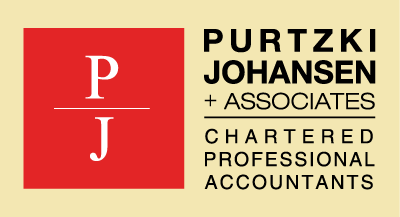
Here is a comparison of the Federal Parties’ election platforms dealing with corporate and personal income tax. Depending which Party forms the next government on October 21, the proposed tax changes will have a big impact on the income tax you will pay for many years to come.
Corporate tax changes
The Liberals propose to cut in half the corporate taxes for businesses that develop technologies or manufacture products that produce zero emissions. The Conservatives as well will reduce tax rates by two-thirds for income generated from green technology developed and patented in Canada.
The Conservatives take aim at the punitive tax measures brought in by the Liberal government. They intend to reverse the passive income rules introduced by the Liberal government. Under the current rules, any corporation that generates more than $50,000 of investment income in the year will lose a portion of the Small Business Deduction (SBD). The SBD is fully eliminated at $150,000 of investment income.
The NDP will increase the corporate tax rate from 15% to 18%, and the Green Party will increase the tax rate to 21%. Both the NDP and Green Party will not change the small business tax rate of 9%.
The Green Party will implement a “robot tax”, which companies will have to pay every time they replace a worker with a machine. The tax revenues will be used to finance educational and retraining programs for workers.
Personal income tax changes
The Liberals have proposed an increase in the amount of income Canadians can earn before they must start to pay federal tax, to $15,000, up from $12,069 in 2019. It will be phased in over four years.
The Conservatives are proposing to reduce the income tax rate of the bottom bracket ($12,069-$47,630) from the current rate of 15% to 13.75% over three years, starting in 2021.
Under both proposals the tax savings are about $185 in 2021 for each eligible taxpayer.
While the personal tax savings for both proposals are modest, they are very expensive for the government. It is estimated that the Conservative tax cut will cost the government $14 billion over the next four years while the Liberal tax cut will cost $18 billion over the same period.
The NDP plans to increase the tax rate for taxpayers in the top income bracket of $210,372 and above from 33% to 35%. This will push the total personal tax rate to over 50% for most provinces.
The Green Party promises to tax 100% of capital gains for individuals with a net worth of over $3 million. The NDP will increase the capital gain inclusion rate from 50% to 75%. The Conservatives and Liberals are leaving the capital gains tax as is.
The Conservatives are proposing changes to the “Tax on Split income” (TOSI) rules introduced by the Liberal Government in 2018. They are proposing to exempt spouses and common-law partners from the application of the TOSI rules and leaving the rest of the legislation intact.
The Liberals offer the following miscellaneous tax measures;
- An enhanced Northern Residents deduction
- A new 50% non-refundable credit for all income received under EI maternity benefits
- Enhancing Canada child benefit for children under 1.
- Increase OAS by 10% at age 75.
- A 1% annual property tax on vacant residential properties owned by non-Canadian entities residing outside Canada. There are exemptions for principal residences and properties rented for more than six months.
The Conservatives offer the following:
- A new 50% non-refundable credit for all income received for EI maternity.
- A new 20% refundable credit on green home improvements between $1,000-$20,000 in 2020 and 2021.
- Reinstate the 50% non-refundable credit for monthly/ weekly transit passes and electronic fare cards used for an “extended period”.
- Reinstate the refundable children’s Fitness tax credit of up to $150 per child for eligible activities.
- Reinstate refundable children’s Arts and Learning tax credit of up to $75 per child for eligible activities.
- Increase age credit by $150
- Expand eligibility criteria to access disability tax credit.
The NDP proposes the following:
- A new 1% annual wealth tax on Canadian resident “economic family” wealth over $20 million. (An “economic family” is defined as a group of two or more persons who live in the same dwelling and are related to each other by blood, marriage, common law or adoption).
- Expand the $450 Volunteer Firefighters Tax Credit.
- New tax credit for graduates to work in designated rural and Northern communities.
- Income tax averaging for artists and cultural workers.
- End preferential treatment on CEO stock option deductions.
- A 15% foreign buyers’ tax on properties purchased by a foreign national, foreign corporation or trustee.
- Increase first-time homebuyers tax credit from $750-$1,500.
The Greens propose the following:
- The same 1% annual wealth tax as the NDP proposes
- Increase the tax credit for volunteer firefighters
- A tax credit for gifts of lands, or of the land and buildings, to community land trusts to provide affordable housing
- End preferential tax treatment for all employee stock options
- Eliminate tax deductions for oil and gas wells, coal mining exploration and development, and flow-through shares
- Eliminate the RESP program and the CESG grants. (The Greens are promising free post – secondary education).



